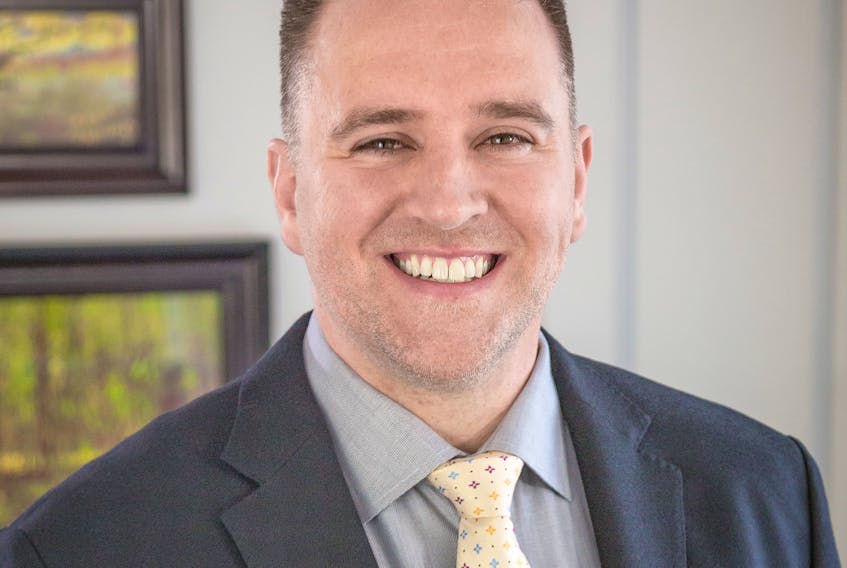HALIFAX, N.S. — People will rebound from prevailing COVID-19 emotional distress, says a longtime clinical psychologist.
“In the short term, we are going to see people experience anxiety, fear, stress, panic and intrusive and unwanted thoughts, avoidance, tension in their bodies and a host of other difficulties,” said Simon Sherry, a professor in the department of psychology and neuroscience at Dalhousie University for the past 13 years.
“In a situation like this we expect a variety of reactions and we expect that most of the distress that people are experiencing now will subside. People are resourceful and they are adaptive and they are resilient and they will rebound within weeks to months. We don’t expect that there is going to be a long-term psychological disturbance arising from this type of a crisis.”
Sherry said a brief spike in fear, panic and anxiety that accompanied the initial onset of the crisis should lessen as people understand the crisis and realize that it can be contained.
Sherry said part of the problem is that people can’t escape the crisis, whether in conversation among family and friends or in social and mainstream media.
“There is no need to talk endlessly and talk purposelessly about COVID-19,” Sherry said. “People can end up ruminating in a verbal way, they can find somebody and talk endlessly and talk purposelessly about COVID-19. What that leads to is not the contagion of a virus but the contagion of emotion. There is such a thing as emotional contagion whereby fear spreads from one person to another.”
Don't fall victim to emotional contagion
Endless chatter is a mechanism for spreading the emotional contagion.
“Current information is important, media is incredibly important but we don’t need to follow every cough, sneeze and sniffle in the COVID-19 crisis around the world. I would suggest instead people should focus locally on controlling their own response and their own action when it comes to COVID-19.”
Sherry said a sort of digital distortion occurs where negative, threatening information becomes over-represented in people’s minds.
“I think there is definitely such a thing as too much information amid this health crisis, that people can be over-exposed to media and a form of social media that creates an ever-present sense of danger. It’s amplifying the threat.”
Help others if you can
Sherry emphasizes that social distancing doesn’t mean psychological or emotional distancing and plenty of opportunity exists for people to turn outward and take action to help others.
“It’s a key time when as a community and as a group you want to come together and pull together in solidarity,” he said. “We are dealing with a community-wide and a country-wide stresser and it’s time to emphasize connection to other people with particular attention to our most vulnerable citizens. In this case, I’m talking about people over the age of 70 and people who might be compromised in terms of their immunity and in terms of their health.
“There is amid all of this an almost unprecedented opportunity for pro-social action. It’s time for us to help other people. That response is almost the opposite of anxiety, fear and worry, which are inward thoughts and feelings that get you focused, over-focused on a perceived threat to yourself.”
Sherry said that outward-focused action could come in the form of telephone or social media contact or something as simple as dropping off groceries to someone confined to their home who is at extra-high risk.
Sherry said two things are happening simultaneously -- the anxiety about the danger and threat of COVID-19 and, secondly, the changes, hassles and adjustments people are forced to make because of what the virus threat is doing to their work and home life.
“How do you explain this to kids, you match your explanation to their developmental level and you help reframe this as an opportunity for your child to learn,” Sherry said. “Don’t focus on the anxiety and the threat, use it as a teaching example to have them learn pro-social action, helping others and pulling together as a community.”
Get support from school system
School kids of all ages are off on March break this week, a break from in-school learning that will be extended by at least two weeks.
“As of yesterday, parents in the school system will be receiving information about how they can continue to access SchoolsPlus and parent navigator supports during the school closure,” said Chrissy Matheson, a spokeswoman with the provincial Education Department.
“These are supports within the school system that provide mental health and other support to families.”
Matheson said the supports will be offered remotely and face-to-face meetings related to the supports will not occur while schools are closed.
“I’m encouraging any parents who are seeing their children struggling to use those supports.”
The department employs 57 social workers, 84 SchoolsPlus community outreach workers, 54 mental health clinicians, 11 parent navigators, 83 school psychologists and 237 guidance counsellors across the province but Matheson said she didn’t have a specific number of employees who would be providing parent support during the shutdown.
Sherry, meanwhile, advocates a proportionate response from all to battle the crisis.
“Part of what we’re talking about underlines the nature of the threat that strikes at the safety and security of home and family,” Sherry said. “And that is a very real threat. What we want people to do is to think rationally and respond proportionately. There is a danger here but you don’t want to amplify that danger, catastrophize that danger, you don’t want to overestimate the likelihood of that danger because all that does is inflame anxiety.”









